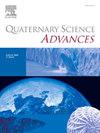Landslide susceptibility assessment using the frequency ratio model in the Mae Chan River watershed, northern Thailand
IF 2.2
Q2 GEOGRAPHY, PHYSICAL
引用次数: 0
Abstract
A landslide is a significant geological hazard that impacts society, the environment, and local infrastructures. The Mae Chan River watershed, a watershed that is surrounded by high erodible mountains, is particularly vulnerable to landslides. This research aimed to assess the susceptibility of landslides in the unique watershed using the frequency ratio approach. Landslide inventory data were 173 landslide scars in the mountainous region of the watershed. The data were extracted from satellite images that captured historical landslide scars on its surface. Landslide causative factors were selected based on causative elements observed in the watershed that potentially caused the previous landslide occurrences. These inventory data and causative factors were combined to create a landslide susceptibility index and classes. The analysis indicated that around 36 % of the entire watershed was highly prone to landslides, especially in the northwestern and southern high mountains. The remaining 43% and 21% of the watershed's area were classified as moderate and low landslide susceptibility classes, respectively. The landslide susceptibility data's accuracy, reliability, and predictability were verified using the area under the receiver operating characteristic (ROC) curve (AUC) analysis. The AUC values represented the success and prediction rates curve of 0.738 and 0.712, respectively, suggesting that the model performed reasonably well in identifying and predicting landslide susceptibility classes. The study highlights the qualification of landslide susceptibility mapping in a watershed in Thailand to other large-scale landslide hazard research.

基于频率比模型的泰国北部美灿河流域滑坡易感性评价
滑坡是影响社会、环境和当地基础设施的重大地质灾害。湄陈河流域是一个被高山环绕的流域,特别容易发生山体滑坡。本研究旨在利用频率比法评估独特流域滑坡的易感性。滑坡盘查数据为该流域山区173处滑坡伤痕。这些数据是从卫星图像中提取的,这些图像捕捉到了其表面历史上的滑坡痕迹。根据在流域观测到的可能导致以往滑坡发生的原因因素,选择滑坡成因。将这些调查数据和诱发因素结合起来,形成滑坡易感性指数和等级。分析表明,整个流域约有36%的地区极易发生山体滑坡,特别是在西北和南部的高山地区。其余43%和21%的流域面积分别被划分为中度和低滑坡易感性等级。利用受试者工作特征曲线下面积(AUC)分析验证了滑坡敏感性数据的准确性、可靠性和可预测性。AUC值分别代表0.738和0.712的成功率曲线和预测率曲线,表明该模型在识别和预测滑坡敏感性等级方面具有较好的效果。该研究突出了泰国某流域滑坡易感性制图在其他大规模滑坡灾害研究中的资格。
本文章由计算机程序翻译,如有差异,请以英文原文为准。
求助全文
约1分钟内获得全文
求助全文
来源期刊

Quaternary Science Advances
Earth and Planetary Sciences-Earth-Surface Processes
CiteScore
4.00
自引率
13.30%
发文量
16
审稿时长
61 days
 求助内容:
求助内容: 应助结果提醒方式:
应助结果提醒方式:


